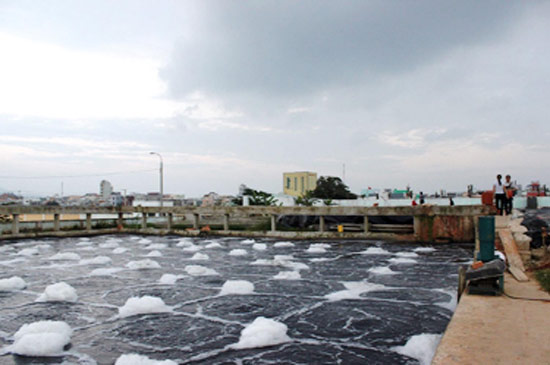Though the budget for solutions to protect the environment has increased by two folds in 2006-2011, from VND1.42 trillion (USD66.6 million) in 2006 to VND2.95 trillion (USD140.4 million) in 2011, dealing with the environment pollution remains a difficult task for the whole society.

The serious pollution…
It is estimated that 1.5 billion cubic metres of untreated waste water is discharged to the environment, which includes 1 billion cubic metres from urban areas and industrial zones. Every day, Hanoi discharges 260,000 cubic metres of industrial waste water. And every day, the Dong Nai River system has to receive 1.5 million cubic metres of waste water from industrial production.
While the environment pollution has become alarming throughout the country, Vietnam still has not found effective measures to settle the problem. Especially, investors have not been encouraged enough to make investment in the environment protection projects.
Experts have pointed out that the environment industry has not taken shape yet in Vietnam. Despite the serious environmental pollution, Vietnam still applies backward waste recycling technologies to treat wastes, which explains the low efficiency of the waste treatment. The equipment has been made separately, while they still cannot be manufactured in large quantities.
According to the Ministry of Natural Resources and the Environment, 30 percent of industrial workshops, mostly large and medium scaled, have waste water treatment stations. However, most of the systems cannot meet the standards or they do not operate regularly.
90 percent of the existing 500 paper establishments nationwide either do not have waste water treatment systems, or have the systems but they cannot satisfy the requirements.
By the end of 2011, Vietnam had had 283 industrial zones, while 65 percent of the 180 operational zones still do not have waste treatment systems.
The reports by relevant agencies show that the waste causing the environmental pollution is alarmingly big. The total solid waste generated in urban arrears is about 30,000 tonnes per day, while only 83 percent of which can be collected and treated.
In rural areas, 30,000 tonnes of waste is generated every day, but only 50 percent of them can be treated. Especially, the percentage is very low in some areas, just 20-30 percent.
Dumping rubbish remains the most popular way of treating waste in Vietnam with 80-85 percent of waste dumped. However, scientists say only 15-20 percent of the dumped rubbish can be treated in a hygienic way.
Responding to the call for investment by the State, 20 projects on processing waste into recycled products have been put into operation. However, most of the waste treatment plants have small scale which cannot settle all the problems. In urban areas, only 15 percent of solid waste can be treated or recycled.
According to Dang Van Loi, Deputy Director of the Environment Control Agency under the General Directorate of Environment, dealing with medical waste remains the toughest problem. Vietnam now has 11,600 healthcare centers which generate 350 tons of waste every day, including 40 tonnes of hazardous waste.
At present, only 35 percent of hospitals have medical waste incinerators, and only 1/3 of the medical waste can be treated with incinerators. The remaining waste has been burned in the open air (15.3 percent), burned with self-modified kilns, dumped within the hospitals’ campuses, or discharged to the public dumping grounds.
… is the big opportunity for businesses
Experts have said that environment businesses would never have to sit idle because of no job.
It is estimated that the demanded capital for the environment protection in 16 economic fields (garment and textile, paper, steel, chemicals, electricity, seafood, industrial zones…) may reach VND7.6 billion. Of this amount, USD800 million would be needed for the steel manufacturing, USD326 million for garments and textiles.
It is expected that 7 solid waste water treatment centers would be set up in three key economic zones by 2020 with the total investment capital of USD600 million.

Leave your comment on this story